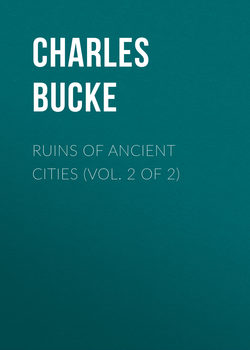Читать книгу Ruins of Ancient Cities (Vol. 2 of 2) - Charles Bucke - Страница 5
NO. V. – NEMEA
ОглавлениеA town of Argolis, greatly distinguished by the games once celebrated there. These games (called the Nemean games) were originally instituted by the Argives in honour of Archemorus, who died from the bite of a serpent; and, afterwards, renewed in honour of Hercules, who in that neighbourhood is said to have destroyed a lion by squeezing him to death.
These games consisted of foot and horse races, and chariot races; boxing, wrestling, and contests of every kind, both gymnastic and equestrian. They were celebrated on the 12th of our August, on the 1st and 3rd of every Olympiad; and continued long after those of Olympia were abolished.
In the neighbouring mountains is still shown the den of the lion, said to have been slain by Hercules; near which stand the remains of a considerable temple, dedicated to Jupiter Nemeus and Cleomenes, formerly surrounded by a grove of cypresses.
Of this temple three columns only are remaining. These columns, two of which belonging to the space between antæ, support their architrave. These columns are four feet six inches and a half in diameter, and thirty-one feet ten inches and a half in height, exclusive of the capitals. The single column is five feet three inches diameter, and belongs to the peristyle. The temple was hexastyle and peripteral, and is supposed to have had fourteen columns on the sides. The general intercolumniation is seven feet and a half, and those at the angles five feet eleven inches and a quarter. It stands upon three steps, each of which is one foot two inches in height. The capital of the exterior column has been shaken out of its place, and will probably ere long fall to the ground. “I have not seen in Greece,” continues Mr. Dodwell, “any Doric temple, the columns of which are of such slender proportions as those of Nemea. The epistylia are thin and meagre, and the capitals too small for the height of the columns. It is constructed of a soft calcareous stone, which is an aggregate of sand and small petrified shells, and the columns are coated with a fine stucco. Pausanias praises the beauty of the temple; but, even in his time, the roof had fallen, and not a single statue was left.”
No fragments of marble are found amongst the ruins, but an excavation would probably be well repaid, as the temple was evidently thrown down at one moment, and if it contained any sculptured marbles, they are still concealed by the ruins.
Near the temple are several blocks of stones, some fluted Doric frusta, and a capital of small dimensions. This is supposed to have formed part of the sepulchre of Archemorus. Mr. Dodwell, however, found no traces of the tumulus of Lycurgus, his father, king of Nemea, mentioned by Pausanias, nor any traces of the theatre and stadium.
Beyond the temple is a remarkable summit, the top of which is flat, and visible in the gulf of Corinth. On one side is a ruinous church, with some rubbish; perhaps where Osspaltes and his father are said to have been buried. Near it is a very large fig-tree. To this a goatherd repaired daily before noon with his flock, which huddled together in the shade until the extreme heat was over, and then proceeded orderly to feed in the cool upon the mountain.
“Nemea,” continues Mr. Dodwell, “is more characterised by gloom than most of the places I have seen. The splendour of religious pomp, and the long animation of gymnastic and equestrian exercises, have been succeeded by the dreary vacancy of a death-like solitude. We saw no living creatures but a ploughman and his oxen, in a spot which was once exhilarated by the gaiety of thousands, and resounded with the shouts of a crowded population21.”
21
Barthelemy; Dodwell; Rees; Brewster.
